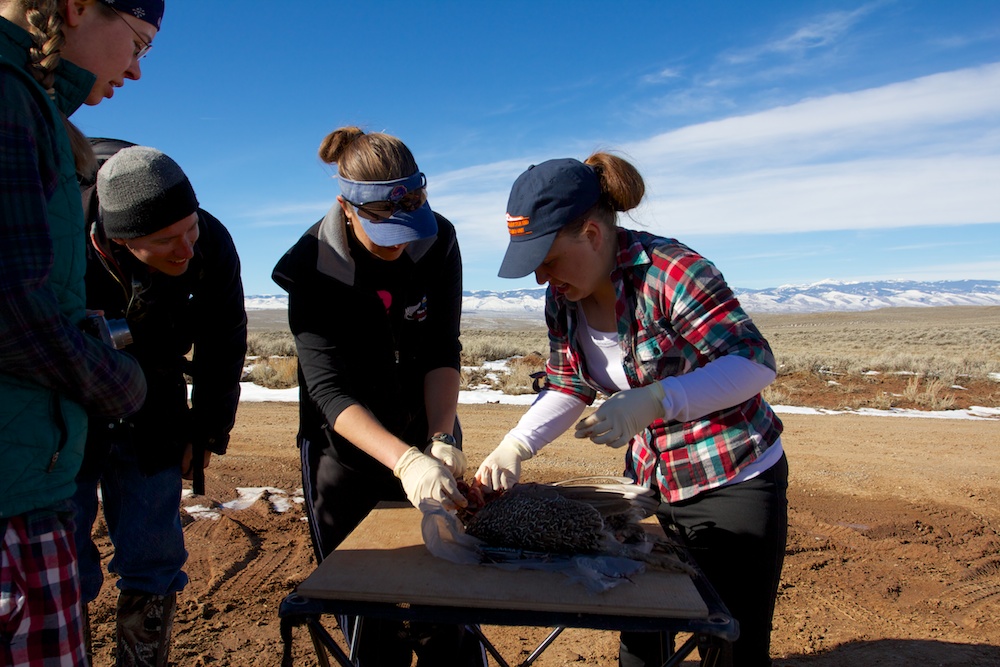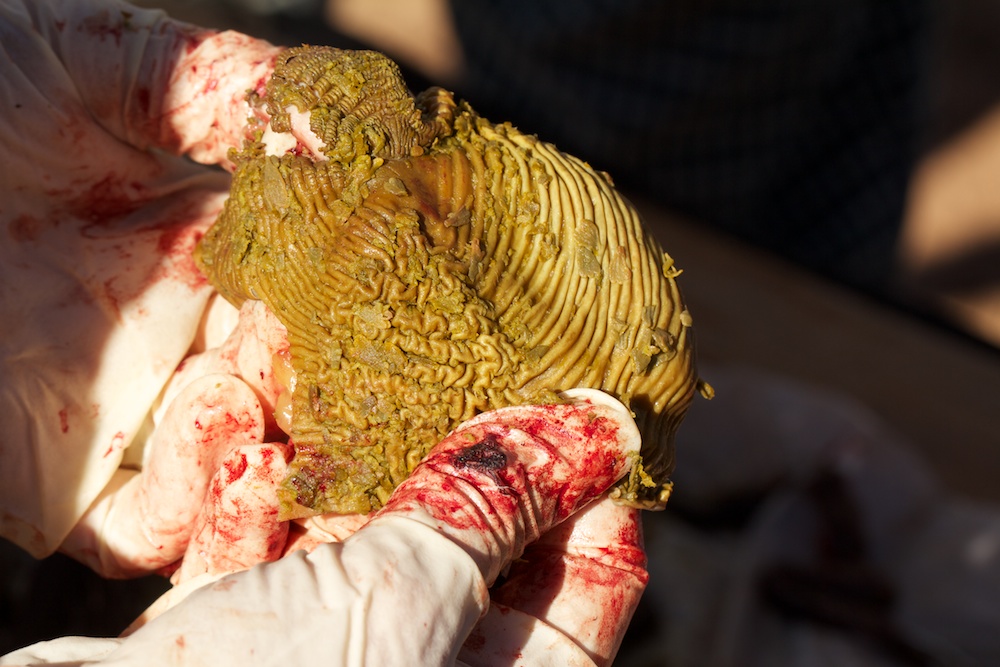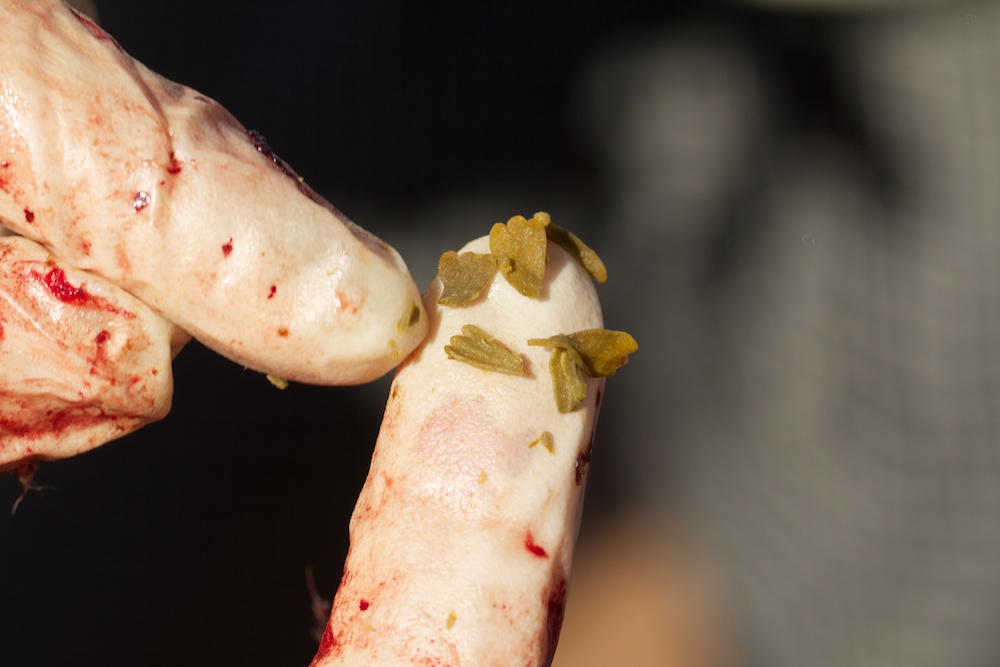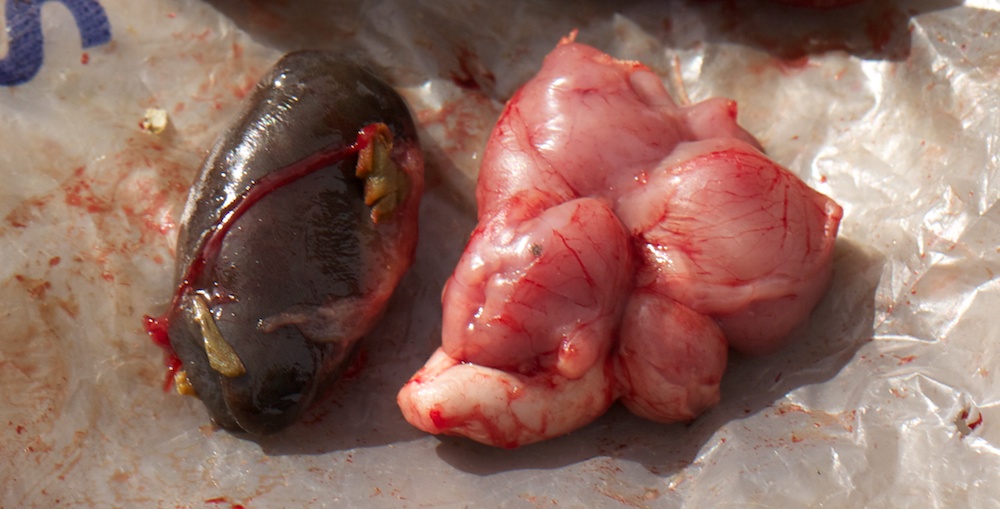It’s pretty amazing how much of unfortunate male Roundasaurus Leks was left after the Gyrfalcon killed him. Jen and Marcella were quick to get back to the lek and grab the bird before the falcon or any other animal else had a chance to eat much of it. Below are a few shots of what they found [IF YOU MAY BE UNEASY ABOUT SEEING DISSECTED ANIMALS, BLOOD, OR BODY PARTS, DO NOT SCROLL DOWN.
.
.
.
.
[keep scrolling]
.
.
.
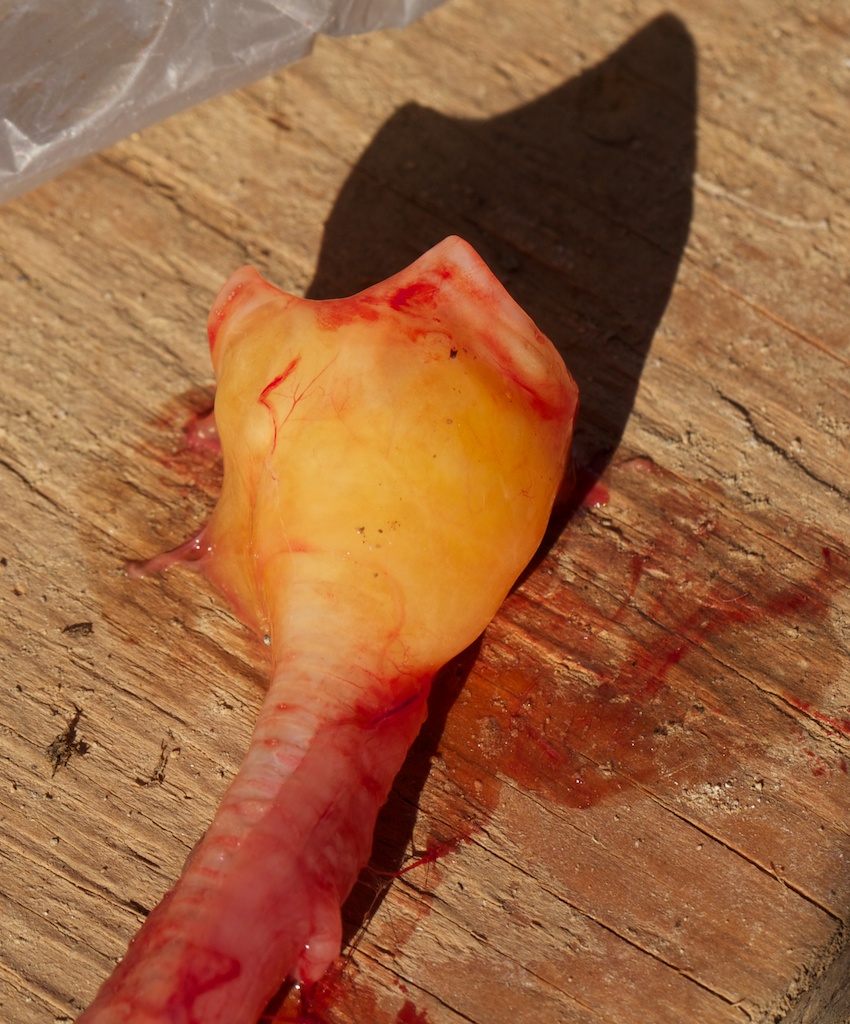
(Most of) the syrinx, the sound producing organ. The yellow is a muscle that only male sage-grouse have out of all game-birds (at least as far as we know).
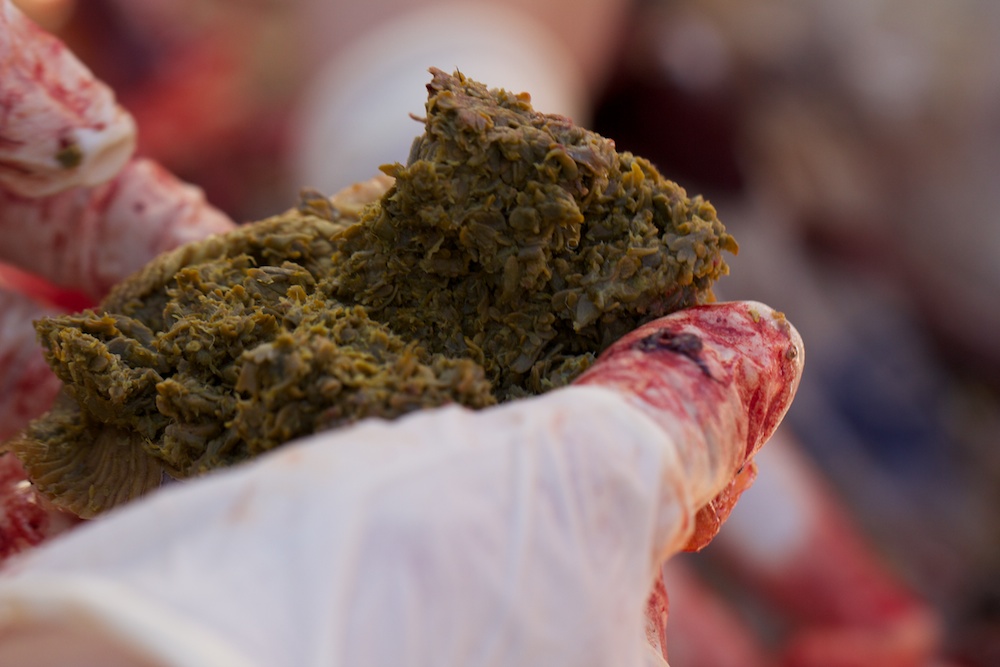
The gizzard was absolutely packed with sagebrush leaves. Surprisingly no traces of other plants, even though the (relatively) mild wet winter has greened things up a bit already.

